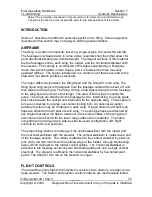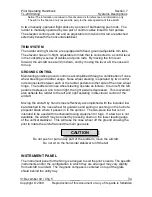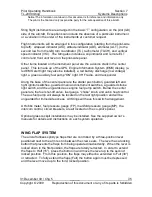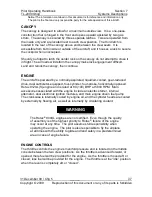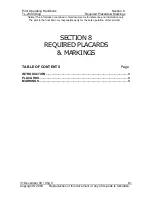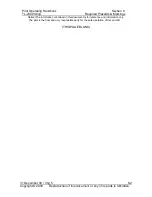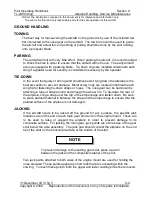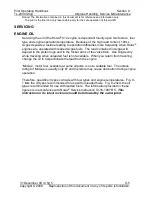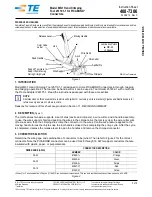
Pilot Operating Handbook
Section 7
TL-2000
Sting
Systems Descriptions
Notice! The information contained in this document is for reference and information only.
The pilot is the final and only responsible party for the safe operation of this aircraft.
31 December 09 / Chg 5
______
7-17
Copyright © 2009 Reproduction of this document or any of its parts is forbidden.
CIRCUIT BREAKERS AND FUSES
Circuit breakers and fuses are the best protection for electrical loads and
malfunctions. The most common form of protection for this aircraft is circuit
breakers (CB) and circuit breaker-switches (CBS). The CBs can be manually
pulled out to disconnect the circuit. If a surge or over-loading amperage is placed
on a CB switch (CBS), the built-in circuit breaker will open, turning the switch off,
thus protecting the circuit. After reducing the electrical load, turn the switch back to
the ON position to reset the breaker.
LIGHTING SYSTEM
Conventional anti-collision, safety strobe lights are located on each wingtip.
These lights are encased in a clear-plastic, flush-mounted cover for protection and
decreased drag. The center panel has a STRB ON/OFF circuit breaker-switch
(CBS) for the strobe lights. Night lighting for the instruments is provided and
dimmable.
Internal lighting of the cockpit is provided by a large LED behind the seats. This
light is hot from the battery buss so it may be turned on CABN without the MAIN
switch during ground inspections or night operations. It is not intended to function
as the night lighting system for the instruments.
LED high intensity position-navigation lights are mounted on each wing tip and on
the lower aft tail. The co-pilot panel has an ON/OFF circuit breaker-switch (CBS)
for the position lights.
Two wing tip mounted HID lamps are used for taxi and landing illumination. The
co-pilot panel has an ON/OFF circuit breaker-switch (CBS) for each of these
(LAND, TAXI) lights.
PITOT-STATIC SYSTEM AND INTRUMENTS
The pitot-static tube consists of a ram air duct located inside a cylindrical static air
chamber. With this construction both the ram and static ports are located on the
same device which is a tube positioned underneath the right wing. The tube
supplies ram air pressure to the airspeed indicator, and the static ports supply
outside atmospheric pressure to the airspeed indicator, altimeter, mode C, and
vertical speed indicator.

